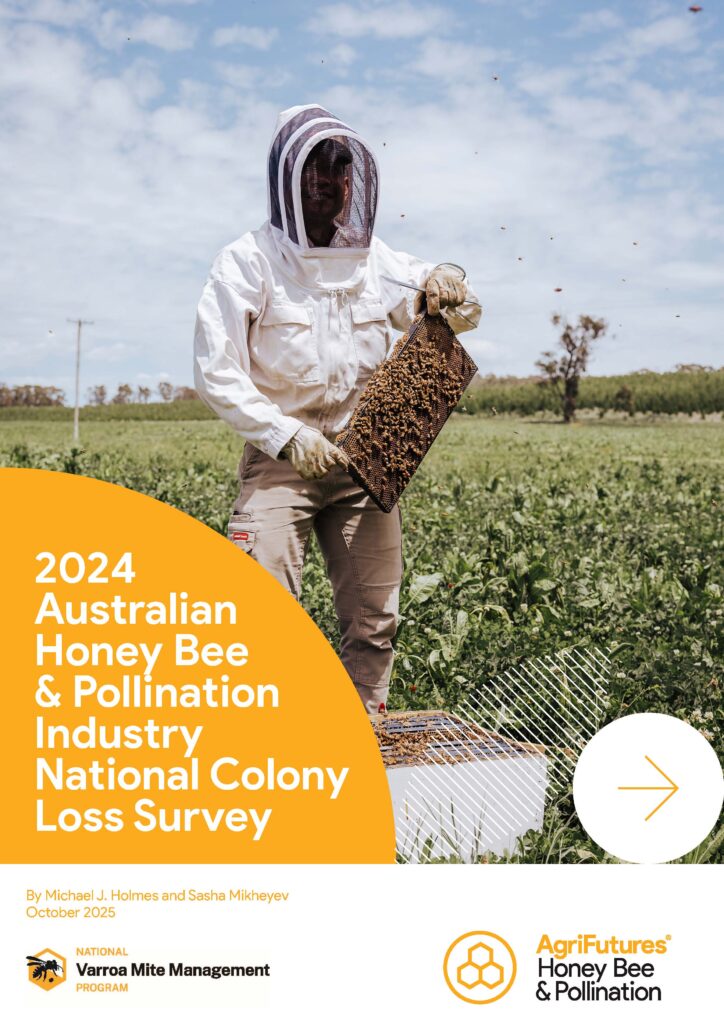The Australian honey bee and pollination industry plays a vital role in Australian agriculture, contributing more than AU$4.6 billion annually to the economy through pollination services and hive products, primarily honey. However, the industry faces many challenges, particularly since the parasitic mite, Varroa destructor, was declared established in New South Wales in September 2023.
Internationally, Varroa is often the leading cause of honey bee colony losses, and similar impacts were anticipated in Australia. Recognising the need to understand the effects of Varroa on bee colonies and other causes of colony loss, the industry initiated the first Australian Colony Loss Survey (COLOSS) for the 2023/2024 production season. This survey aimed to establish pre-Varroa baseline data for areas still free of the mite and assess its impact in regions where it is already present.
The survey revealed a national annual colony loss rate of 1.55%, providing a fragile baseline for the Varroa-free majority of the country. In NSW, where Varroa is already established, it was identified as a leading cause of colony loss, imposing substantial economic burdens on beekeepers through reduced honey production, additional labour and increased hive management costs.
Analysis of Varroa treatments indicated that synthetic acaricides like Bayvarol and Apivar were the most effective, with the highest efficacy and the lowest incidence of adverse effects. However, international experience shows that Varroa rapidly develops resistance to these chemicals, underscoring the need for an integrated pest management strategy to maintain their effectiveness.





